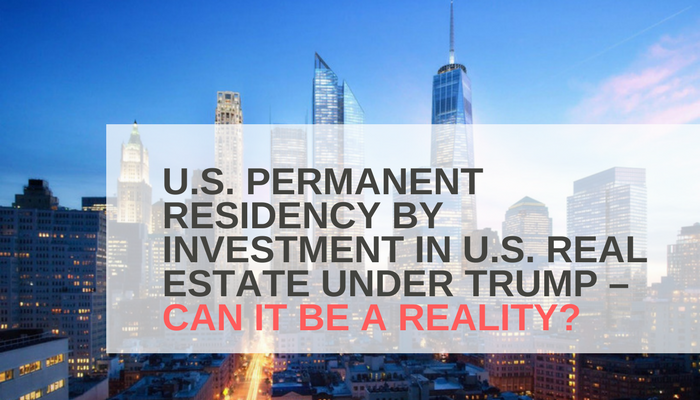Edward C. Beshara
Attorney at Law/Managing Partner, BESHARA, Global Migration Law Firm
The EB-5 Regional Center Program has been extended until September 28, 2017.
The consensus is that the EB-5 Regional Center Program will continue.
President Trump and the Kirschner Group know about EB-5 Regional Center Projects.
Regional Center EB-5 projects are generally in Urban areas.
Will there be new legislation or new USCIS regulations which may change the requirements for the investment? The proposed legislation will increase the minimum investment amount from $500,000 to
The proposed legislation will increase the minimum investment amount from $500,000 to $800,000 if the Project is located in a Target Employment Area or rural area.
The proposed legislation will require a TEA analysis that will make it more difficult for urban Projects to be classified in a TEA. Otherwise, for non-TEA, a $1million investment may be required.
In comparison, USCIS has proposed regulations that will if approved, increase the minimum investment from $500,000 to $1.2 million, and if not in a targeted employment area or rural area, to $1.8 million.
Any new legislation would supersede existing USCIS regulations.The basic structure of the EB-5 Regional Center Program will continue as-follows.
The basic structure of the EB-5 Regional Center Program will continue as follows.
One to many foreign nationals may invest their personal funds into a legal entity (which may own the land and the buildings to be constructed). The personal investment has to be 100% at risk and no part of the principal investment amount can be exchanged for/or purchase an asset of value such as a condominium or town home.
The EB-5 project will use the foreign national investors funds to finance their construction projects, and create indirect jobs. The foreign national investor will first obtain conditional permanent residency then after two years, full or unconditional permanent residency.
Foreign national investors only investing in real estate does not lead to U.S. permanent residency.
The U.S. EB-5 program has substantial competition from the Residency by Investment in Real Estate programs of other countries.
How can the U.S. program be competitive?
Foreign national investment in U.S. real estate is substantially increasing.
The U.S. has a solid economy with the values of real estate rising, and mortgages to foreign buyers being provided by financial institutions.
In the U.S., Prime real estate can be sold to the foreign national investor. For example, prime U.S. homes, can be sold at USD $350,000.00 each. Many foreign national investors may decide to buy two prime located homes. In the majority of cases the foreign national investor will pay cash.
With the assistance of U.S. professionals and financial institutions, a mortgage on the real estate purchased may be obtained.
For instance, the foreign national investor may have purchased two condos at USD $350,000.00 each, for a total of USD $700,00.00. This transaction is independent of the EB-5 investment.
The financial institution may provide a mortgage of USD $500,000.00 to the foreign national investor. This mortgage amount is considered the personal funds of the foreign national investor.
At this point the EB-5 program requires personal funds of USD $500,000.00 (the minimum investment amount) to be invested into the EB-5 Regional Center project.
Based upon the above facts, the mortgage amount of USD $500,000.00 can be personally invested in the separate EB-5 project in order to obtain first the U.S. conditional permanent residency.
As the EB-5 projects become known in new markets besides China, they have to be competitive to attract new investors as explained above. This is the key to a successful U.S. Residency by Investment program.
If you are interested in learning more about EB-5 immigration, please contact us today and our experienced EB-5 attorneys will guide you through the process.
Telephone: (407) 571-6878 Email: ebeshara@besharapa.com Website: www.besharapa.com

